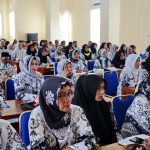When HP launched Print Pals in Australia, in collaboration with a world-renowned puppeteer and former therapist for children with autism, Stacey Gordon, in late July this year, the aim was to offer a family-fun activity that fosters communication and understanding for all kids, caregivers. In the classroom, HP Print Pals can also be adapted as a tool for neurodivergent kids.
Print Pals are created to help all kids communicate through play and chat in a neurodiverse world, with printables that can be easily downloaded. It means Print Pals puppets are accessible and affordable – ready to print and use – and merge the magic of printing with the vibrant world of art to foster social engagement and digital inclusion, to help children communicate in a colourful, impactful way that is meaningful to them.

Managing emotional regulation
In Australia, an estimated one in five kids are neurodivergent. While emotional regulation is an ongoing skill everyone develops, puppets can be a great way for children to explore their experiences and bring what’s inside, out through connection, play and chat.
“I love how puppets are this invitation to play. They can communicate so much: from joy to sadness and make a real connection with people,” says Gordon.
“And while a lot of families don’t have access to puppets that are expressing specific feelings, now they have a perfect opportunity to create one. Every kid feels the same range of emotions that adults feel. And they don’t always have the tools to regulate and express those emotions, and this is one more tool to help them do that.”
Behind Print Pals
While most families may not have a puppet lying around, they are likely to have access to create one – a
printer. Kids and families can print and personalise their own. Print Pals with eyes, mouths, arms, and other
features that help express their individuality and creativity. The Print Pals puppets come in two styles, including Glove Puppets that only take a few steps to make and Moving Mouth Puppets that are slightly
more complex.
Gordon told EducationDaily that she wanted to help create puppets that reflect the real lives of children, “so I made sure to include accessories like AAC devices, headphones, ponytails and poofs, cochlear implants, wheels and more”.
“If a kid says they feel like a robot, or a dancing cow, or a creature with a unicorn horn, wings, and roller
skates, I want them to be able to create that – to express every part of themselves. Because there’s so
much to express.”
Inclusivity for kids with all kinds of abilities was top of mind for Gordon and HP when designing the Print
Pals, and she told EducationDaily she drew on her own lived experience as a parent of a neurodivergent child.
The two different styles of puppets created: Glove Puppets and Moving Mouth Puppets, each feature
intentionally designed to express a different facet of a child’s imagination and reflect the actual lives of
their creators.
Strengthening communities through better communication
As part of the development, HP also collaborated with Jackie Sikic, owner and director of Kid Link
Occupational Therapy and Shadia Hancock, Neurodivergent and ADHD advocate and Autism Actually
owner and founder. Both Sikic and Shadia contributed to the program creation, by providing insight
and feedback to ensure HP communicated with the correct language and messaging from a
neurodiversity-affirming perspective, with the goal to ensure that the Print Pals serve as a thoughtful tool
with the Australian neurodivergent community.
Gordon says puppetry helps bring out what’s inside her and wants these puppets to help kids in the same
way.
“I chose to not label the expressions to allow kids to explore and connect with what they see rather than
what they’re told they’re seeing. So, eyes that might look angry can be turned upside down and then
they look sad. A mouth can be a smile or a frown depending on how they look at it. A moustache could
also be hair or an antennae or even eyebrows. All of them can be mixed and matched to express
whatever is authentic to them.”







